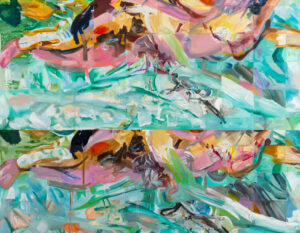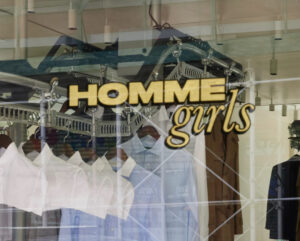It’s tempting to reduce Gen Z’s sober-curious movement to a simple binary: less alcohol, more health. But that’s a narrow frame. What’s unfolding is not just a shift in consumption—it’s a redefinition of pleasure, performance, and what it means to feel good.
Alcohol isn’t being canceled. It’s being demoted.
Not for being morally wrong, but for being inefficient.
Hangovers don’t just dull the senses—they waste hours, derail schedules, and stall momentum. In a generation trained to measure and optimize every variable, alcohol’s biggest sin isn’t indulgence. It’s poor ROI.
A New Definition of Fun
For previous generations, nightlife was about losing control. Drinking was a rite of passage, a release valve, a blur of basslines and bad decisions. Gen Z doesn’t share that cultural mythology. Raised in the shadow of pandemic trauma, climate crisis, and a 24/7 internet, this is a generation more fluent in biometrics than beer pong.
Fun, for many, now means functionality. The new pleasure principle prioritizes sleep quality, mood stability, digestive health, and long-term energy. The goal isn’t to “let loose”—it’s to live well.
Gut health trumps cheap shots.
Saturday mornings are more sacred than Friday nights.
HRV scores are checked more often than drink menus.
Adaptogens, not alcohol, are the wind-down ritual of choice.
This isn’t an absence of indulgence—it’s a reframing of it.
The Rise of Luxury Abstinence
Enter “luxury abstinence,” the curated, elevated world of non-alcoholic rituals and wellness-forward nightlife. It’s a space that’s rapidly becoming aspirational—and expensive.
- $18 mocktails served in glassware as intentional as the menu
- $120 detox kits packaged like designer fragrance sets
- $12,000-a-year wellness memberships that replace bottle service with personalized data dashboards
Abstinence is no longer framed as restriction. It’s the opposite: a form of access, control, and refinement. For some, it signals status as clearly as a Rolex or a VIP pass once did.
And brands have noticed. Red wine-inspired tinctures like Apothékary™’s L-theanine and California poppy blends are marketed as mood support for a new era—offering the ritual of a nightcap without the physiological tax.
The experience is luxurious in feel and function. It’s about pleasure without compromise.
Wellness as Performance
Health, in Gen Z’s cultural context, is no longer just personal—it’s performative. It shows up on social media feeds as matcha rituals, ice bath selfies, and sunrise pilates videos. A well-being routine isn’t just private—it’s aesthetic, even cinematic.
The latest data backs it up:
- 29% of Gen Z joined a new gym in Q1 2024, according to IHRSA
- 56% list fitness as a top priority, per a McKinsey wellness report
- “Friday night out” has been traded in for “Saturday morning optimized”
Wellness is the new nightlife. The currency is no longer chaos. It’s clarity.
The Post-Human It Girl
The archetype of the moment isn’t the party girl—it’s the optimized woman. She tracks her HRV. Her skincare routine involves ingredient lists longer than cocktail menus. Her idea of escapism? Infrared saunas and mushroom tonics.
She doesn’t “go out”—she wakes up well.
She knows that alcohol isn’t inherently bad—but it doesn’t match her ambitions. A hangover isn’t a harmless indulgence; it’s a glitch in the system. This mindset isn’t prudish—it’s pragmatic.
She’s not anti-pleasure. She just defines it differently.
Reinventing the Night
As Gen Z retools its relationship with alcohol, it’s also reshaping the concept of nightlife. The shift isn’t just about what’s in the glass—it’s about what kind of spaces and experiences people want to inhabit.
Bars and clubs that once ran on volume and chaos are being replaced—or supplemented—by environments that foster calm, clarity, and conversation. Think candle-lit mocktail lounges, meditation-based parties, wellness pop-ups with DJs and no booze in sight.
In these reimagined spaces, performance doesn’t mean spectacle. It means presence. The new scene isn’t about escaping the body—it’s about being fully in it.
And when Gen Z does drink, it’s often with intention: low ABV options, natural wines, botanical infusions. Transparency matters. So does recovery. Consumption is tracked, just like steps or sleep.
This isn’t rebellion. It’s design.
Not a Trend—A Transformation
To frame this cultural shift as a “sobriety trend” is to misunderstand its roots. This isn’t a blip or a backlash. It’s an ideological realignment.
In an attention economy, clarity is a commodity.
In a burnout era, energy is haute.
In a culture of constant visibility, control is power.
Gen Z isn’t less fun. They’re just fun on purpose.
The demand is growing—for products that support mood and cognition, for experiences that leave people better than they found them, for nightlife that doesn’t come at a cost.
This recalibration may feel unfamiliar to those steeped in older models of what youth culture “should” look like. But for Gen Z, it’s intuitive. Pleasure isn’t gone—it’s just moved into sharper focus.
Further Reading: Culture shift breakdown on Substack
No comments yet.







